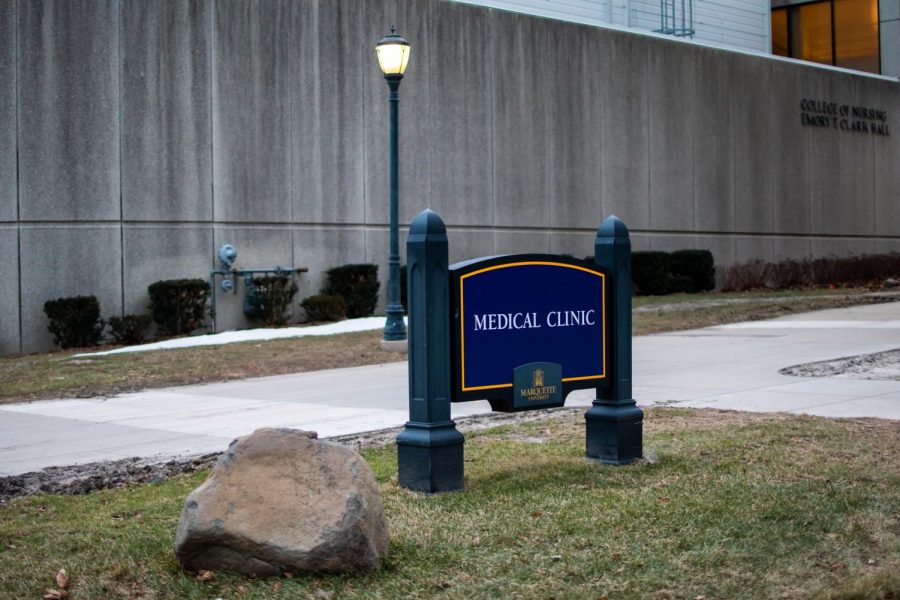
Despite the fact that many people turn a blind eye to the impoverished and homeless in the Milwaukee community, certain organizations work hard to create awareness and combat homelessness daily.
The Milwaukee Continuum of Care works closely with both the state and federal government to help provide a “continuum of services for homeless individuals and families,” according to its website.
One of the many ways the Milwaukee Continuum of Care works to help the homeless is by conducting a bi-annual Point in Time Survey, a census mandated by the U.S. Department of Housing and Urban Development. The census determines the number of homeless people living on the streets as well as the people living in shelters and transitional housing programs.
While conducting this year’s survey over a two-day period in late January, more than 70 volunteers visited emergency shelters and transitional housing programs, meal programs, drop-in centers, libraries, churches and encampments in the area, according to a press release from the Milwaukee Continuum of Care. They also worked with Milwaukee Police Department’s Homeless Outreach Team to locate the people that were more difficult to find.
Kari Lerch, Milwaukee Continuum of Care coordinator for Community Advocates, said three surveys were created to help count and determine further information about the homeless. One was for people without shelter, another with shelter and another was a shortened version for those found on the street.
Scott Davis, a researcher for the Center of Urban Initiatives and Research at the University of Wisconsin-Milwaukee, said the survey is about 27 questions long, and the shortened version contains 10 questions. The survey collects demographics like age, race and sex. It also asks participants whether they are receiving help and why they are homeless.
Milwaukee is not the only city to conduct this survey, as HUD mandates continuums across the nation to perform this survey bi-annually, Lerch said.
“The survey is very eye-opening,” Lerch said. “It helps a lot of people put a face to homelessness.”
Fewer jobs has meant a larger homeless population in Milwaukee
Numbers from last month’s survey will likely be released later this year, but 2009’s Point in Time survey found 1,660 homeless adults and children in Milwaukee the night of Jan. 28, 2009.
There was a 13 percent increase in homelessness from 2007 to 2009, and homeless experts expect that to increase this year due to the recession and the state’s job shortage, according to a press release.
Lerch said the biggest issue is unemployment. The fact that these people do not have jobs means they cannot afford housing.
“It is not for lack of wanting to work, it is lack of education, lack of clothes, and lack of resources,” she said.
Davis agrees a lot has to do with the lack of jobs.
“We are still analyzing this year’s data, but a lot of what we are seeing is the need for more jobs and job training,” Davis said.
Davis helps compile the information collected from the surveys into a report that can be found on the Milwaukee Continuum of Care’s website.
He said many people do not notice that after the economy tanked, it is the educated people with families and good-paying jobs that are becoming homeless.
“The survey is a really good evaluative tool,” Davis said. “It shows what type of funding we will be needing to help these people.”
MPD, Marquette students lead a hand to the homeless community
Officers Anthony Leino and James Knapinski work with the homeless on a daily basis as a part of the MPD’s Homeless Outreach Team.
Leino said he was shocked to find out the number of homeless in Milwaukee.
He said homelessness is a big concern on Marquette’s campus because students walk past the homeless daily.
“They feel pressured to stop and give them something, which is not a situation anyone wants to be in,” Leino said.
Overall, Leino says the Homeless Outreach Team interacts with 25 to 30 people on a daily basis who are living unsheltered in the city.
“Most congregate downtown because they can get three full meals a day,” Leino said. “Also, they can panhandle downtown around Brady Street and the Third Ward, which is where they get the money to buy alcohol.”
He said people don’t realize you cannot just place these homeless and unsheltered people anywhere. Some shelters will take people with mental disorders, while some will not. Some will take people with alcohol problems, and others will not.
“Right now, we want to identify the guys that are homeless and unsheltered and get them matched to a place that will suit them,” he said.
Lerch said one of the ways students at Marquette and community members can help is to volunteer at meal sites and at local shelters.
“The key to helping the homeless is through relationship building,” she said.
Anne O’Meara, a sophomore in the College of Arts & Sciences, and Tom Nass, a junior in the College of Arts & Sciences, work closely to combat homelessness through Marquette’s Midnight Run program, which allows students to go out into the community and work at local meal sites and shelters.
O’Meara said Midnight Run has allowed her to form relationships and has fueled a desire to seek social justice in other situations.
She said certain cities have dealt really well with homelessness and that Milwaukee is in the process of doing that.
“Systematic changes need to take place in order for change to happen,” O’Meara said.
Nass described his experiences with Midnight Run as an “eye-opening journey into the lives of our impoverished neighbors.”
“The homeless and impoverished in this city are not problems for Milwaukee; Milwaukee is a problem for them,” Nass said in an e-mail. “A lot of homeless people try very hard to obtain a simple job that would provide much needed income, but many employers have trouble giving them that chance.”
Nass said Milwaukee as a city can provide help to those who need it.
“Government aid only goes so far for many families, causing them to rely on the same meal programs, food pantries and other life-sustaining needs that they utilized when they were homeless,” he said.
Nass believes the revolution to end homelessness in Milwaukee begins with us.
“Every moment we give to someone in need is one that could change their life,” Nass said. “If you don’t have any change, that’s fine. What they really need is a genuine conversation, just a few minutes of your time. Break out of your bubble and experience something different through the eyes of the poor.”
O’Meara said as students, we should not be afraid to step outside the Marquette community and get involved with the greater Milwaukee community.
“It is easier to not see the problems here because they are a little intimidating,” she said. “But as a Jesuit institution, that is why we are here in the city, so we can be where the need is.”



